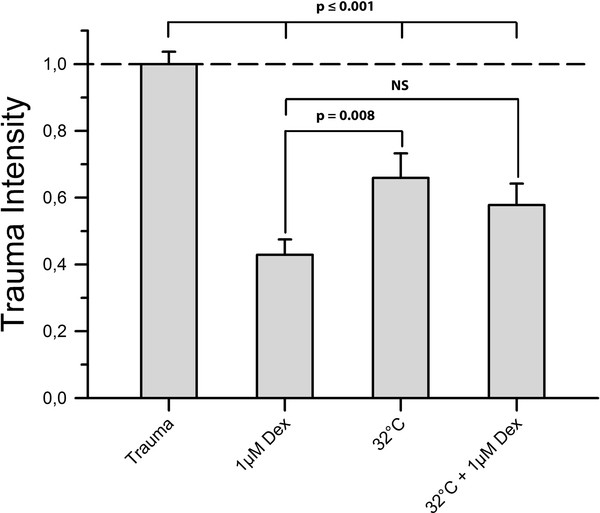Figure 3.

Hypothermia. We subjected a group of slices (n = 49) to mild hypothermia of 32°C for 72 h after TBI to distinguish the observed dexmedetomidine protection from already determined neuroprotective treatment. Furthermore, we treated another group of slices (n = 68) simultaneously with both mild hypothermia and 1 μM dexmedetomidine to investigate a potential additive effect of both treatments. Figure 3 shows that treatment with mild hypothermia caused a significant reduction of trauma intensity when compared to the positive control group (p ≤ 0.001). However, this protective effect was significantly lower than protection provided by 1 μM dexmedetomidine (p = 0.008). Treatment with both hypothermia and 1 μM dexmedetomidine proved to be more effective in reducing trauma than hypothermia alone (p = 0.415) but showed no statistical difference compared to a treatment with 1 μM dexmedetomidine alone (p = 0.073).
